Reading Comprehension Text and Exercises
Bucharest
The Little Paris
Bucharest, the capital of Romania and one of the largest cities in the European Union, is by far underrated. Known as "The Little Paris" because of its Arch of Triumph, similar to the one in the capital of France, this is a city where finding a centuries-old church and a glass office building next to it is quite common. Bucharest is a place of beautiful contrasts worth exploring.
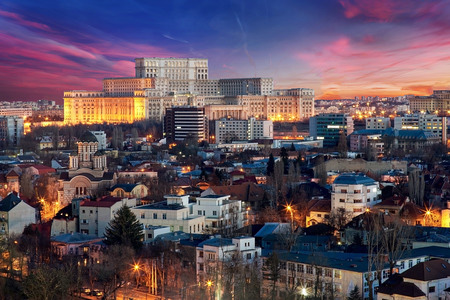
Click Here for Step-by-Step Rules, Stories and Exercises to Practice All English Tenses
A Brief History of Bucharest
- Bucharest was first mentioned in 1459 as a residence of Prince Vlad III.
- When the Ottomans occupied parts of Romania, they appointed Greek administrators to be in charge of the city.
- During the 18th and 19th century, Bucharest was won and lost by different empires many times. In 1847, a great fire consumed a third of all the buildings in the city. The city also suffered from endemic floods during that period.
- With the unification of Wallachia and Moldavia, Bucharest became the capital of the new Romanian nation.
- Having fought on the German side during World War II, Romania adopted a communist regime (a system whereby all property is publicly-owned) during which many new districts of Bucharest were constructed.
- After the 1989 Romanian Revolution which overthrew the communist regime, Romania opened its borders to an increasing number of tourists coming to Bucharest.
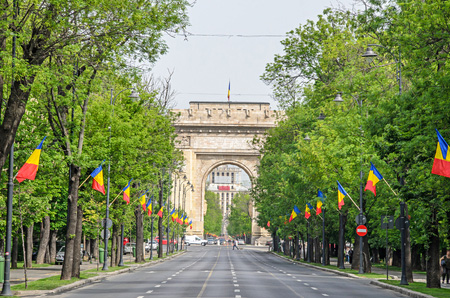
Attractions
Parliament Palace
It is not well-known that Bucharest is home to the largest parliament building in the world, also known as the People's House. Built during the communist era, this massive construction has 3,100 rooms.
Most rooms are made of pure marble, and are beautifully decorated with traditional Romanian ornaments. Even though the Palace hosts the Senate, three museums and an international conference center, 70% of the building remains empty.
Tourists can access only some of these rooms, as well as the balcony which Romania's dictator Nicolae Ceausescu used to speak to the crowds.
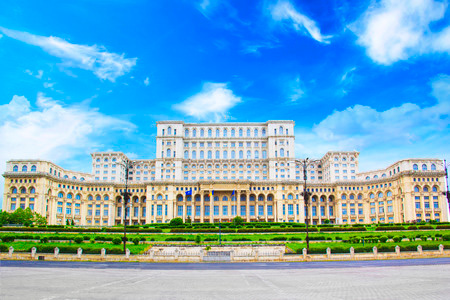
Revolution Square
Formerly known as the Palace Square, this square was renamed after the 1989 Romanian Revolution which ended communism and brought democracy. People of Bucharest remember this square as the place where Ceausescu rose to power, but also where he later gave his final speech in 1989.
As such, the Revolution Square is an important place of remembrance and a representative of the national identity of the country. It is also a great starting point for tourists interested in walking tours due to its central location.
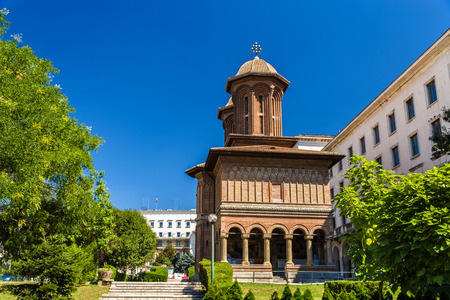
Cismigiu Garden
This lovely garden can be found only 200 meters away from Revolution Square. More than 150 years old, Cismigiu Garden is home to 30,000 trees and plants brought in from the Romanian mountains.
You can also enjoy seeing numerous exotic plants which were fetched from the botanical gardens in Vienna. People of all ages and interests spend their free time in the garden since it has cafes, children's playgrounds and a lake, which is used for rowing in summer and skating in winter.
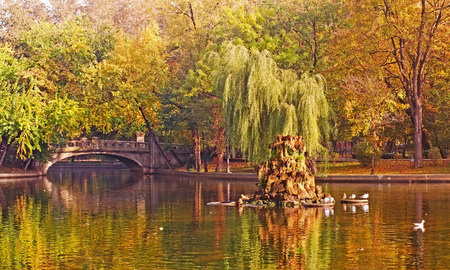
Village Museum
This atypical museum will teach you lots about Romania's regions through a historical tour. In this spacious outdoor complex, there are more than 60 original houses, farmsteads, windmills, watermills and churches, most of them dating from the 19th century.
One of the biggest attractions for tourists are the earth houses, which are dug into the ground and covered with thatched (made of dried straw) roofs. Occasionally, folkloric and crafts festivals are held in this museum.
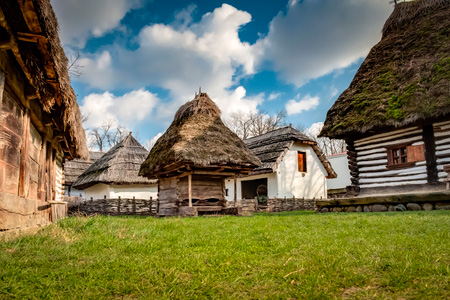
Things to do in Bucharest:
- Eat out at one Bucharest's food carts. These American-style food trucks are an excellent idea if you are craving fast food.
- Bike your way through Bucharest. Biking is an accessible and a rather cheap way to see all the important places in Bucharest. There are many guided biking tours which will show you around if you worry about doing it alone.
- Explore the Old Town. This is a small part of the city, but has preserved some of the oldest monuments in the city. It is also the most vibrant area of the city where you can truly hear Bucharest buzzing.
- Shop at a local market. If you are looking to buy fresh local produce, try going to the Obor Market for berries and mushrooms from the mountains. Otherwise, check out the city's biggest flea market, Valea Cascadelor.
Comprehension Exercises
Vocabulary Questions
- What does "folklore" mean?
- Romanian traditional dance
- traditional beliefs, customs and stories of a community
- old church books
- What does "dictator" mean?
- a ruler who has a total power over a country
- a ruler who assumes power after the fall of an empire
- an army member
- What does "underrated" mean?
- poorly ranked
- underestimated in value
- paid in small rates
- What does "flea market" mean?
- a market selling cars
- a market selling animals
- a market selling used goods
- What does "endemic" mean?
- regularly occurring in a certain area
- extremely rare
- incurable
Collocation Questions
- In 1968, Ceausescu gave a speech which helped him ___________ to power.
- advance
- elevate
- rise
- If you are ___________ street food, eat at one of the food trucks.
- longing for
- craving
- dreaming of
- The Ottomans ___________ Greek administrators to run Bucharest.
- appointed
- suggested
- nominated
- People ___________ spend their free time in the garden.
- of different maturity
- of different ages
- of all ages
- 10. In the Old Town, you can truly hear Bucharest ___________.
- ringing
- buzzing
- fussing
- Numerous exotic plants were ___________ from the gardens of Vienna.
- fetched
- delivered
- shipped
- The Village Museum is a very ___________ museum.
- strange
- rare
- atypical
- The 1989 Revolution ___________ the communist regime.
- removed
- dethroned
- overthrew
- The Revolution Square is an important place of ___________ for the people of Bucharest.
- remembrance
- recollection
- memory
- Bucharest became the capital with the ___________ of Wallachia and Moldovia.
- unification
- marriage
- coalition
Wh Questions
- What are the rooms in the Parliament Palace made of?
- ivory
- gold
- marble
- When did a fire destroy the city?
- in 1945
- in 1847
- in the 17th century
- How far is the Cimisiu Garden from the Revolution Square?
- 200 meters
- 2 kilometers
- They are located in the same place.
- Why is Bucharest called "The Little Paris"?
- because many painters live in Bucharest
- because French is commonly spoken in Bucharest
- because of the Arch of Triumph
- Where can tourists see Romanian earth houses?
- in the Village Museum
- on the streets
- in the Old Town
Evaluating Statements
- Based on the information in this lesson, which statement is true?
- During communism, nearly everyone could visit Romania.
- During communism, Romanian borders were closed for most visitors.
- Based on the information in this lesson, which statement is false?
- In the Village Museum, you can find windmills but no watermills because they don't exist anymore.
- In the Village Museum, you can find original windmills and watermills from different regions in Romania.
True or False?
- Based on the information in this lesson, is the following statement true or false?
"Bucharest is a very bike-friendly city." - True
- False
- Based on the information in this lesson, is the following statement true or false?
"Nowadays, Romanian government uses nearly all of the rooms in the Parliament Palace for different purposes." - True
- False
Answer Key
1. B | 2. A | 3. B | 4. C | 5. A | 6. C | 7. B | 8. A | 9. C | 10. B | 11. A | 12. C | 13. C | 14. A | 15. A | 16. C | 17. B | 18. A | 19. C | 20. A |21. B | 22. A | 23. A | 24. B
Get Updates, Special Offers, and English Resources
Download your FREE GIFT (the first two chapters of
English Short Stories Book and Workbook)
as soon as you join!

By submitting your email, you consent to receiving updates and newsletters from us and to the sharing of your personal data with third parties for the purposes of sending you communications. We will not spam you. You can unsubscribe at any time. For more information, please see our privacy policy.






